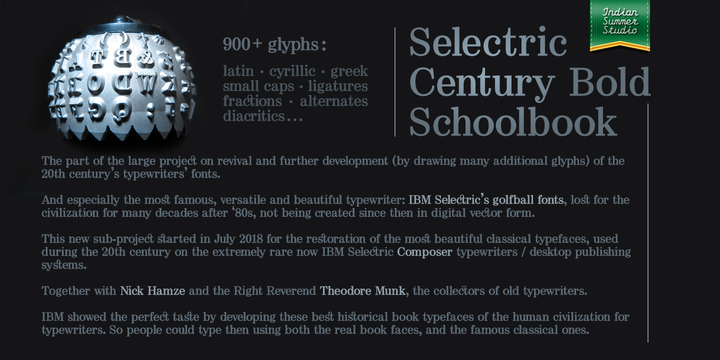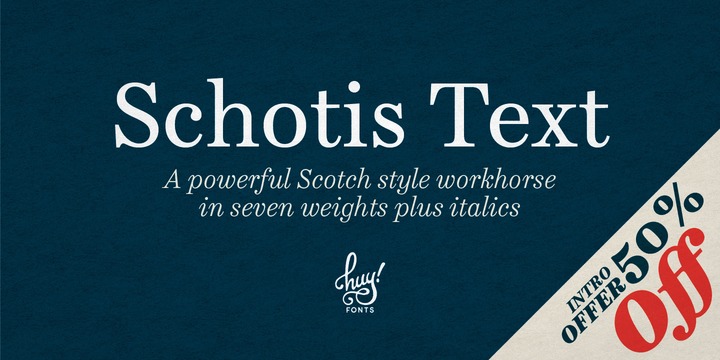 |
Also known as Schoolbook. 900+ glyphs.
After Linn Boyd Benton's and Morris Fuller Benton's 1894 lower contrast version of Scotch Modern, Didone.
The part of the large project on revival and further development (by drawing many additional glyphs) of the 20th century’s typewriters’ fonts.
And especially the most famous, versatile and beautiful typewriter: IBM Selectric’s golfball fonts, lost for the civilization for many decades after ‘80s, not being created since then in digital vector form.
This new sub-project started in July 2018 for the restoration of the most beautiful classical typefaces, used during the 20th century on the extremely rare now IBM Selectric Composer typewriters / desktop publishing systems.
Together with Nick Hamze and the Right Reverend Theodore Munk, the collectors of old typewriters.
IBM showed the perfect taste by developing these best historical book typefaces of the human civilization for typewriters. So people could type then using both the real book faces, and the famous classical ones.
